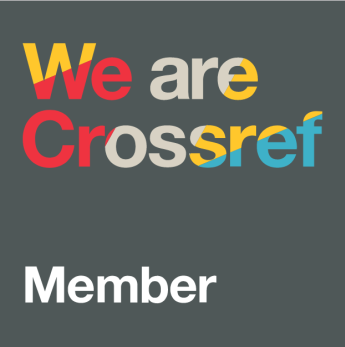Ideologies in outdoor public signs in Bali: A critical pragmatic and linguistic landscape study
DOI:
https://doi.org/10.21831/lt.v11i1.68427Keywords:
critical pragmatics, linguistic landscape, public signs, Bali, ideologyAbstract
References
Afzal, A. (2012). Ethnocentrism. Encyclopedia of Immigrant Health (pp. 655–656). Springer New York. https://doi.org/10.1007/978-1-4419-5659-0_263
Balabanis, G., & Diamantopoulos, A. (2016). Consumer xenocentrism as determinant of foreign product preference: A system justification Perspective. Journal of International Marketing, 24(3), 58–77. https://doi.org/10.1509/jim.15.0138
Cahyono, H. (2011). Dimensi politik dan ekonomi kaum muslim Bali. In M. H. Basyar (Ed.), Minoritas Muslim Bali: di Denpasar, Badung, Buleleng, dan Jembrana. P2P LIPI.
Creativany, M. A., Udayana, A. A. G. B., & Remawa, A. A. G. R. (2020). Kajian estetika, fungsi, dan makna logo sukla satyagraha di Denpasar. PRABANGKARA, 24(2), 64–72.
Fairclough, N. (1989). Language and power. Longman.
Fhanny, P., Bandiyah, B., & Pramana, G. I. (2021). Populisme Arya Wedakarna sebagai DPD RI Dapil Bali. Politika Udayana, 1(2).
Halliday, M. A. K. (1985). An introduction to functional grammar. Edward Arnold.
Hassan, A. F., & Muhammed, W. S. M. (2022). A critical pragmatic study of hate speech in some selected American movies. Journal of Positive School Psychology, 6(6), 5338–5354.
Jumari. (2017). Gerakan ekonomi satyagraha hindu bali melalui labelisasi non-halal "Sukla" (Antara kebangkitan militansi dan ancaman benih intoleransi). ANCOMS, 338–346.
Kartini, I. (2011). Dinamika kehidupan minoritas muslim di Bali. Masyarakat Indonesia, 37(2), 115–145.
Korta, K., & Perry, J. (2011). Critical pragmatics: An inquiry into reference and communication. Cambridge University Press.
Landry, R., & Bourhis, R. Y. (1997). Linguistic landscape and ethnolinguistic vitality. Journal of Language and Social Psychology, 16(1), 23–49. https://doi.org/10.1177/0261927X970161002
Mehdi, W. S. (2020). American sexism: A critical pragmatic perspective. European Journal of Literature, Language and Linguistics Studies, 4(3), 120–139.
Mey, J. (2001). Pragmatics: An introduction (2nd ed.). Blackwell.
Mubarok, M. S. (2018). Diskriminasi di negeri sendiri hanya karena (bukan) bule. Kumparan.Com. https://kumparan.com/muhammad-sholich-mubarok/diskriminasi-di-negeri-sendiri-hanya-karena-bukan-bule-1519728470597/full
Paramarta, I. M. S. (2022). Balinese language on the street signs in singaraja town, Bali: A linguistic landscape analysis. Ranah: Jurnal Kajian Bahasa, 11(1), 120. https://doi.org/10.26499/rnh.v11i1.4197
Parthama, I. G. N. (2019). Teks verbal dan visual media kampanye pilgub Bali. Pustaka, 19(2), 118–125.
Pidada, I. A. P. P. (2021). Penggunaan tanda luar ruang dan fungsinya di kecamatan Denpasar barat. Widyadari, 22(1).
Prima, A. (2022). Viral warung bakso babi 100 persen haram, netizen: Tanpa basa-basi. Medcom.Id. https://www.medcom.id/nasional/peristiwa/ob34aD8k-viral-warung-bakso-babi-100-persen-haram-netizen-tanpa-basa-basi
Purnawati, K. W., Artawa, K., & Satyawati, M. S. (2022). Linguistic landscape of jalan gajah mada heritage area in Denpasar city. JURNAL ARBITRER, 9(1), 27. https://doi.org/10.25077/ar.9.1.27-38.2022
Rahmawati, H. (2017). Speech acts in madagascar 3 (a film) and their application in ELT. LingTera, 4(2), 136–148.
Saussure, F. de. (1916). Course in general linguistics. Columbia University Press.
Silalahi, T. S. (2020). The tricking of advertisers (Critical pragmatic analysis). BAHTERA, 19(1), 127–142.
Sudarsono. (2020). Kepemimpinan kiai dalam menjaga keragaman sumber daya manusia di pondok pesantren Bali bina insani tabanan dan pondok pesantren nurul jadid buleleng Bali. Pascasarjana Institut Agama Islam Negeri.
Sudaryanto. (1993). Metode dan aneka teknik analisis bahasa. Duta Wacana University Press.
Susanti, R. (2019, August 6). Viral iklan kambing berhijab di bandung, ini penjelasan rabbani artikel ini telah tayang di kompas.com dengan judul "Viral iklan kambing berhijab di bandung, ini penjelasan rabbani. KOMPAS.Com.
Sutrisnawati, N. K., & Purwahita, A. A. A. R. M. (2018). Fenomena sampah dan pariwisata Bali. Jurnal Ilmiah Hospitality Management, 9(1).
Widiatmika, P. W., Suastra, I. M., & Malini, N. L. N. S. (2023). Balinese diglossia shown by public signs as language vitality symbol from linguistic landscape perspective. Journal of Applied Studies in Language, 7(2), 193–206. https://doi.org/10.31940/jasl.v7i2.193-206
Wulansari, D. W. (2020). Linguistik lanskap di bali : Tanda multilingual dalam papan nama ruang publik. KREDO : Jurnal Ilmiah Bahasa Dan Sastra, 3(2), 420–429. https://doi.org/10.24176/kredo.v3i2.4600
Yule, G. (1996). Pragmatics. Oxford University Press.
Downloads
Published
How to Cite
Issue
Section
Citation Check
License
LingTera allows readers to read, download, copy, distribute, print, search, or link to its articles' full texts and allows readers to use them for any other lawful purpose. The journal allows the author(s) to hold the copyright without restrictions. Finally, the journal allows the author(s) to retain publishing rights without restrictions.
- Authors are allowed to archive their submitted articles in an open-access repository.
- Authors are allowed to archive the final published article in an open-access repository with an acknowledgment of its initial publication in this journal.

Psychology, Evaluation, and Technology in Educational Research is licensed under a Creative Commons Attribution-ShareAlike 4.0 International License.
Based on a work at https://petier.org/index.php/PETIER.









